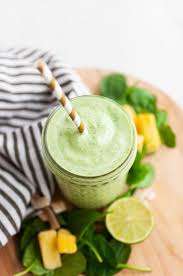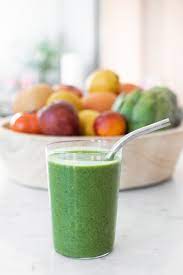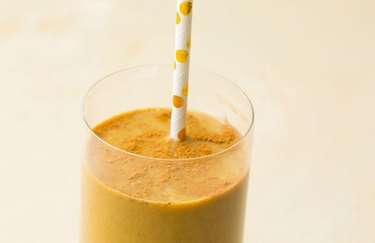Smoothies have taken the diet world by storm, offering an easy and convenient way to consume fruits and vegetables.
Many believe that smoothies are the ultimate solution for shedding extra pounds. But is everything we hear about smoothie diets true?
In this article, we shall debunk the top 10 myths about smoothie diets for weight loss and shed light on the real facts backed by scientific research.
Let us get into the misconceptions surrounding smoothies, with a focus on providing more information than any article currently available.
Article Index:
- Myth #1: Smoothies Are a Guaranteed Weight Loss Solution
- Myth #2: You Can Replace All Your Meals with Smoothies
- Myth #3: Green Smoothies Automatically Burn Fat
- Myth #4: All Smoothies Are Healthy
- Myth #5: You Don’t Need Protein in Your Smoothie
- Myth #6: Store-Bought Smoothies Are Just as Good as Homemade
- Myth #7: Smoothies Are Great for Long-Term Weight Loss
- Myth #8: Any Smoothie Can Help You Lose Belly Fat
- Myth #9: Smoothies Will Keep You Full All Day
- Myth #10: More Smoothies = Faster Weight Loss
- FAQs on Myths on Smoothies for Weight Loss
Myth #1: Smoothies Are a Guaranteed Weight Loss Solution
Fact #1:
While smoothies can be a healthy addition to your diet, they are not a magic bullet for weight loss.
Simply drinking smoothies—especially without paying attention to what’s in them—won’t automatically melt fat or shed pounds.
Many smoothies, especially those loaded with fruit juices, sweetened yogurts, or nut butters, can be surprisingly high in calories and sugar.
Sustainable weight loss is a multifaceted process.
According to a study in The New England Journal of Medicine, lasting results come from consistent lifestyle changes like eating a balanced, calorie-controlled diet, exercising regularly, and addressing behavioral habits.
Smoothies can support your journey by helping you consume more fiber, vitamins, and minerals—especially if made with leafy greens, protein, and healthy fats.
But without portion control, mindful eating, and a holistic approach to health, they won’t guarantee weight loss. Think of them as a tool—not the whole toolbox.

Myth #2: You Can Replace All Your Meals with Smoothies
Fact #2: Replacing all your meals with smoothies can deprive your body of essential nutrients.
Many smoothies, particularly those made solely with fruits, lack critical components such as healthy fats and sufficient protein, which are necessary for a well-rounded diet.
The Journal of Nutrition emphasizes that long-term meal replacement strategies like these can lead to nutrient deficiencies, especially in iron, calcium, and fat-soluble vitamins.
A balanced smoothie can serve as a meal replacement occasionally but should not become the sole source of nutrition.
The key is to incorporate protein, fiber, and healthy fats to make it a more complete meal.
Myth #3: Green Smoothies Automatically Burn Fat
Fact #3:
Green smoothies, while packed with nutrients, do not have magical fat-burning properties.
Many people associate their vibrant color and veggie content with automatic weight loss, but this belief is more hype than truth. The idea that drinking a green smoothie will lead to fat loss is not supported by any scientific evidence.
While they are a great way to sneak in leafy greens, vitamins, and fiber, they’re not metabolic miracle workers.
Weight loss occurs when there is a calorie deficit, not from consuming any specific type of smoothie. You could drink green smoothies daily, but if your overall calorie intake exceeds what your body burns, fat loss won’t happen.
Studies from The American Journal of Clinical Nutrition show that a calorie-controlled diet, combined with regular exercise, is what truly leads to fat loss.
A green smoothie can be part of a healthy diet, but it won’t directly cause weight loss on its own..
Myth #4: All Smoothies Are Healthy
Fact #4:
Many people believe that drinking smoothies alone can lead to rapid weight loss, but that’s far from the full story. While smoothies can support your wellness goals, they are not a one-size-fits-all fix.
In fact, if not prepared thoughtfully, smoothies can be calorie-dense and sugar-loaded—especially those sold commercially or made with fruit juice, flavored yogurt, or sweeteners.
Research published in The New England Journal of Medicine emphasizes that long-term weight loss is achieved through behavioral changes, consistent calorie control, and regular physical activity—not by relying on any single food or drink.
When used mindfully and as part of a calorie-conscious, nutrient-rich eating plan, smoothies can be helpful. But on their own, they are no magic solution for shedding pounds sustainably.
>>> Want to Lose Weight Like I Did??? Check Out My “Secret Fat Loss Smoothie Recipe” TODAY! <<<
Myth #5: You Don’t Need Protein in Your Smoothie
Fact #5:
Skipping protein in your smoothie is a common mistake, especially if you are using it as a meal replacement or post-workout refuel. Protein is essential for satiety, muscle repair, and metabolic function.
Without it, your smoothie may taste great but leave you feeling hungry an hour later.
According to a study in The American Journal of Clinical Nutrition, adequate protein intake helps preserve lean muscle mass during weight loss, making it vital for anyone on a fat-loss journey.
Protein also plays a key role in repairing tissues after exercise and supporting immune health. So do learn to choose the best protein for muscle recovery and for the sake of your health.
By adding ingredients like unsweetened Greek yogurt, a scoop of protein powder, chia seeds, or nut butter, you turn your smoothie into a more balanced and satisfying meal.
Not only does this enhance its nutritional profile, but it also helps regulate your appetite and energy levels throughout the day.

Myth #6: Store-Bought Smoothies Are Just as Good as Homemade
Fact #6:
While store-bought smoothies may seem like a convenient health option, they often fall short in terms of actual nutrition.
Many commercial smoothies are packed with added sugars, preservatives, and artificial flavors that dilute their health benefits.
According to the Harvard T.H. Chan School of Public Health, some bottled smoothies can contain up to 50 grams of sugar per serving—almost equivalent to a can of soda!
These hidden sugars can spike your blood sugar levels, contribute to weight gain, and undermine the very purpose of drinking a smoothie. In contrast, homemade smoothies allow you to take control of every ingredient.
You can opt for nutrient-dense foods like spinach, kale, avocado, chia seeds, flaxseeds, almond butter, or unsweetened Greek yogurt.
Plus, you can limit or skip sweeteners entirely, using natural fruits like berries or bananas for flavor. In short, homemade smoothies are cleaner, healthier, and way more customizable.
Myth #7: Smoothies Are Great for Long-Term Weight Loss
Fact #7:
Smoothies can kickstart weight loss, but relying on them for the long haul often leads to a familiar trap—yo-yo dieting.
This happens when people replace meals with smoothies to lose weight quickly, only to regain the weight (or more) once they return to regular meals.
A study published in The International Journal of Obesity highlights this pattern, showing that liquid meal replacements rarely support sustained weight management when not paired with long-term behavioral changes.
The issue is that smoothies, while convenient and nutritious, do not teach you how to plan or prepare balanced, satisfying meals.
They also may not offer the same satiety as chewing whole foods, which affects appetite control over time.
For weight loss to stick, your focus should be on building a consistent, realistic eating pattern filled with whole grains, lean proteins, veggies, and healthy fats.
So learn to build a balanced plate with whole foods and your body shall thank you.
Smoothies can still play a supporting role—just not the starring one.
Myth #8: Any Smoothie Can Help You Lose Belly Fat
Fact #8:
The dream of sipping your way to a flatter stomach with a magical smoothie is, unfortunately, just that—a dream. Scientifically speaking, there’s no evidence that any specific food, including smoothies, can directly target fat in one area of the body. Spot reduction is a myth.
According to research published in The American Journal of Clinical Nutrition, fat loss occurs when your body is in a caloric deficit—burning more energy than it takes in—and that loss is distributed systemically, not selectively.
While smoothies can be a helpful tool in a weight loss plan—thanks to their potential to curb appetite, boost nutrition, and replace higher-calorie meals—they won’t specifically torch belly fat.
The only way to shrink your midsection is to focus on sustainable lifestyle habits: reducing your overall caloric intake, getting consistent physical activity (especially cardio and resistance training), improving sleep, and managing stress, which can influence cortisol and fat storage patterns.
A well-balanced smoothie that includes fiber, protein, and healthy fats can absolutely be part of a belly-fat-friendly routine—but let’s not crown it a fat-burning elixir. If anything, think of smoothies as a team player, not the MVP, in your journey toward a leaner waistline.
Myth #9: Smoothies Will Keep You Full All Day
Fact #9:
While smoothies are often praised as a quick and healthy meal option, the idea that they would keep you full all day is, well, wishful thinking. Most smoothies—especially those made primarily with fruits and vegetables—are digested rapidly due to their liquid form.
Your stomach doesn’t need to work as hard to break them down, which means they leave your digestive system quicker than solid foods.
A study in the journal Appetite supports this, showing that liquids tend to be less satiating than solids, even when they contain the same number of calories. This makes you more likely to feel hungry again sooner and reach for snacks, potentially leading to overeating.
But not all smoothies are created equal. If you want your smoothie to stick with you longer, you need to treat it more like a balanced meal. Add fiber-rich ingredients like chia seeds, oats, or flaxseeds to slow digestion.
Pair these with protein sources such as Greek yogurt, nut butter, or protein powder to help stabilize blood sugar and increase satiety.
In short, smoothies can be part of a healthy routine, but they’re not a magic hunger blocker—unless you build them right.
Myth #10: More Smoothies = Faster Weight Loss
Fact #10: Drinking more smoothies won’t speed up weight loss.
In fact, overconsumption of smoothies can add unnecessary calories to your diet, especially if they are packed with sugars. Some switch from normal to green smoothie diet plan for weight loss – expecting miraculous results.
A study published in The Journal of the Academy of Nutrition and Dietetics found that excessive consumption of high-calorie smoothies can hinder weight loss
The key to weight loss is maintaining a calorie deficit while meeting your nutritional needs. Simply drinking more smoothies won’t accelerate the process.

FAQs on Myths on Smoothies for Weight Loss
Q-1: What are the biggest calorie myths about smoothie diets for weight loss?
A-1: Two standouts: (1) “Smoothies are automatically low-calorie.” Not true—large fruit portions, nut butters, sweetened milks, and syrups can push a “healthy” drink over 500–800 kcal. (2) “Liquid calories satisfy like solid food.” They usually don’t; liquids clear the stomach faster and are easier to overconsume. Fix it: cap fruit at 1–1½ cups, add water/unsweetened milk, limit fats to 1 tablespoon, and use a 12–16 oz glass with a straw-free sip pace.
Q-2: Do smoothies always keep blood sugar stable—and is fiber the same after blending?
A-2: Myth: “Blending preserves fiber, so any smoothie is low-glycemic.” While fiber isn’t lost, high-speed blending reduces particle size, making carbs faster to absorb; fruit-only blends can spike glucose. Another myth: “Juices and smoothies are interchangeable.” Juices remove most fiber, generally raising glycemic impact further. Fix it: build a “PFF” smoothie—Protein (20–30 g), Fat (5–10 g), and Fiber you can see (1–2 tbsp chia/flax + leafy greens), and prefer whole fruit over juice.
Q-3: Will a 7-day smoothie “detox” melt fat and toxins?
A-3: Myth: “Detox smoothies purge toxins and accelerate fat loss.” Your liver, kidneys, lungs, and gut do detox continuously; crash liquid plans mainly drop water and glycogen, not body fat. Another myth: “More greens = more detox.” Overloading oxalate-rich greens (e.g., spinach) daily without rotation can irritate some people’s guts. Fix it: rotate greens (spinach, kale, romaine), keep calories consistent, and aim for sustainable deficits—300–500 kcal/day—rather than cleanse cycles.
Q-4: Are all store-bought or café smoothies weight-loss friendly?
A-4: Myth: “Green color = lean results.” Commercial blends often hide added sugar, sherbet, or sweetened yogurt. Portion creep (24–32 oz cups) compounds the issue. Another myth: “Protein add-ins make any smoothie a meal.” Not if the drink still lacks fiber and volume. Fix it: read the build sheet; target ≤300–400 kcal, ≥20 g protein, ≥8 g fiber, and no added syrups. If in doubt, order half-fruit, double-greens, and add plain protein.
Q-5: Can I live on smoothies and lose weight faster—especially around workouts?
A-5: Myth: “All-smoothie meal plans are superior.” Long-term, they can underdeliver on chew-time satiety, iron, iodine, and omega-3s, and may dull fullness signals. Myth: “Pre/post-workout smoothies should be pure carbs.” Skipping protein delays recovery and can increase later hunger. Fix it: use smoothies as tools, not a food group replacement—one planned meal or snack per day is plenty. Around training, include 20–30 g protein plus 25–40 g carbs and a pinch of salt. For the rest of your meals, prioritize chewy, protein-forward, high-fiber plates that slow eating and support a durable calorie deficit.
Takeaway
Smoothies can be a valuable tool for weight loss when used correctly, but they are far from the miracle solution some claim them to be.
It is important to debunk the myths surrounding smoothies and recognize that sustainable weight loss requires a balanced diet, regular exercise, and mindful eating.
While smoothies can be a convenient way to get more fruits and vegetables into your diet, they should be part of a broader strategy that includes whole foods, proper nutrition, and lifestyle changes.
By understanding the facts, you can make smarter choices when incorporating smoothies into your diet and achieve long-term weight loss success.
References: